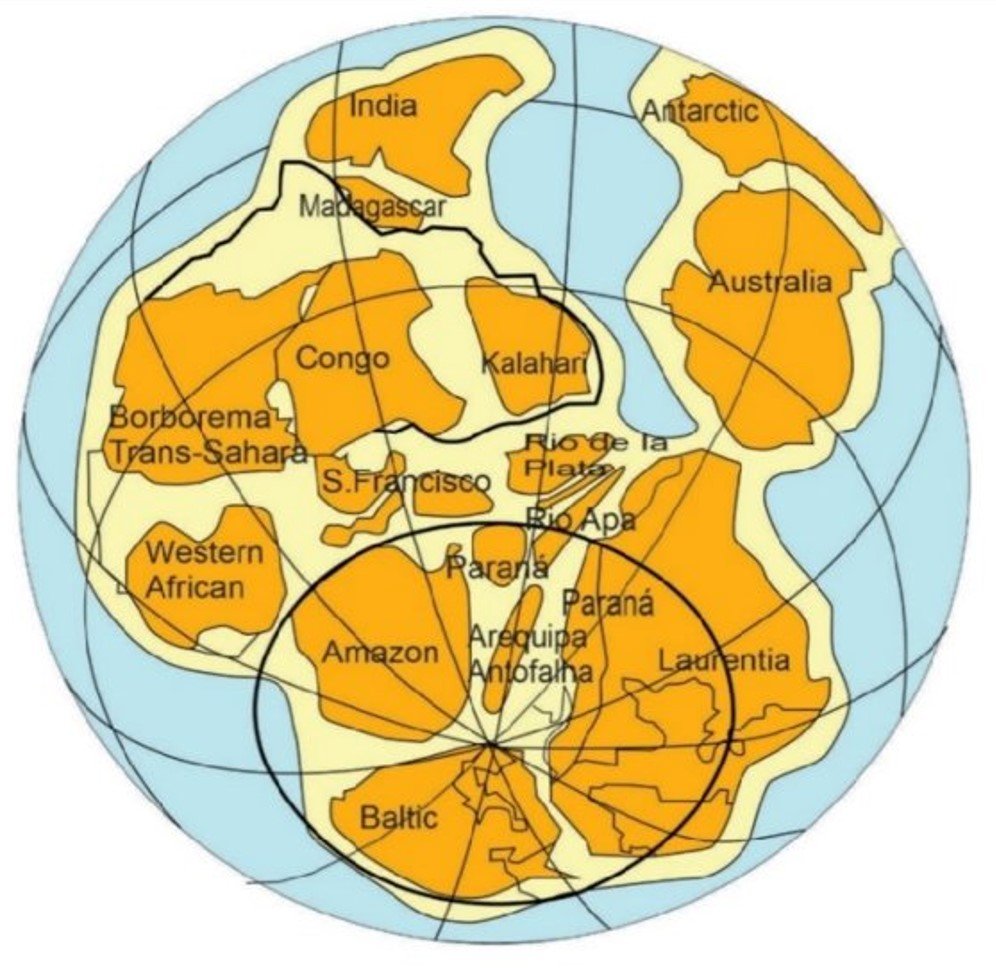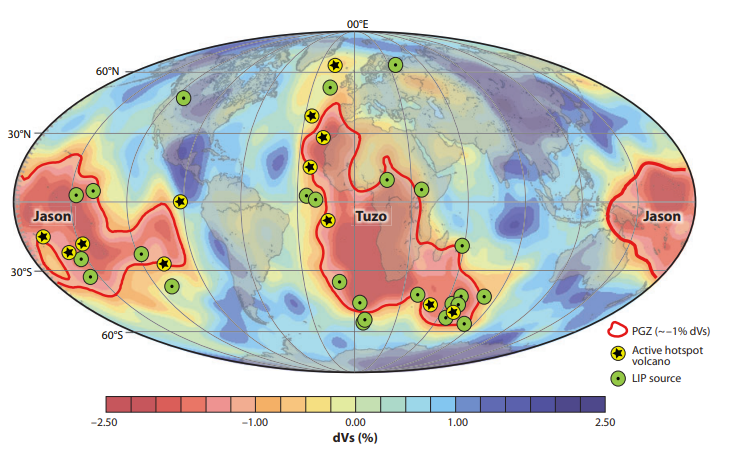Damian Nance on What Drives the Supercontinent Cycle
Listen to the podcast here, or wherever you get your podcasts.
Damian Nance draws on a wide range of geological evidence to formulate theories about the large-scale dynamics of the lithosphere and mantle spanning a period going back to the Archean. A major focus of his research is the supercontinent cycle. As he discusses in the podcast, our newly acquired knowledge of the deep mantle casts the supercontinent cycle into a whole new light — as a mantle-lithosphere phenomenon rather than a purely tectonic one playing out on and just below the Earth’s surface.
Nance is Distinguished Professor Emeritus of Geological Sciences at Ohio University.
Podcast Illustrations
Supercontinent Timeline (Without Pannotia)
This timeline was proposed by David Evans (a 2021 Geology Bites guest). The timeline indicates the possible existence of Pannotia as well as of Kenorland, a Paleoproterozoic supercontinent that preceded Nuna. Black lines represent rift zones associated with supercontinental breakup. Red stars in the Superia supercraton (lower right inset) indicate possible mantle plume focal points of radiating swarms of mafic dykes.
Evans, D.A.D., et al. (2016), Geol. Soc., London, Special Publications, 424, 1-14
Pre-Pangean Supercontinents
Pannotia
Pannotia, if it existed, lasted from about 630 million years ago to 530 million years ago. In the podcast, Damian Nance explains why its existence is controversial, but that even if it was only a close gathering of continents, it might have been enough to reverse the pattern of flow in the mantle. Orange regions are ancient continental blocks (cratons), and the yellow areas indicate presumed other continental material.
Hasui, Y.A. (2010), Geociências. v. 29. n. 2. P. 141
Rodinia
Rodinia existed during the Mesoproterozoic and Neoproterozoic between about 900 million years ago and 750 million years ago. The cratons are shown in light green, other continental material is shown in dark green, and the orange band indicates Grenville-age (1.3-0.9 Ma) orogens along which the supercontinent was assembled.
Li, J. et al. (2012), Precambrian Research 309, 181
Nuna
Nuna, also sometimes called Columbia, existed from about 1.7 billion years ago to 1.5 billion years ago. Cratons older than 2,300 Ma are shown in pale grey, mountain ranges aged 1,660 to 1,500 Ma are shown in dark grey, the entire light area with a green border indicates the extent of Nuna at 1,590 Ma, and the red lines indicate presumptive subduction.
Zhang, S. et al. (2012), Earth and Planetary Science Letters, 353-354, 145
Numerical Modeling of Mantle Flow
Computer modeling of the evolution of mantle flow patterns discussed in the podcast, with supercontinent assembly occurring above downwelling regions (blue), and supercontinent breakup fostered by mantle plumes in upwelling regions (yellow). The modelling suggests a random mantle circulation when the continents are scattered (a). Mantle convection then tends to evolve to a degree-1 structure with antipodal areas of upwelling and downwelling, and the downwelling leading to the formation of a supercontinent above it (b—>c). Once the supercontinent is formed, subduction of the closing oceans stops, and subduction jumps to the edges of the supercontinent, forming a subduction girdle around it (d). The subduction girdle influences mantle dynamics in such a way as to convert the downwelling beneath the supercontinent into an upwelling, thereby producing a mantle with a degree-2 structure, i.e., one with two antipodal areas of upwelling bisected by a downwelling girdle (d). The dynamical process of true polar wander (TPW) causes the supercontinents, being a region of excess mass, to move towards the equator (d—>e). The upwelling beneath the supercontinent causes it to break up (e), scatter the continents, and eventually return the mantle flow to a degree-1 structure (e—>b).
Li, Z.-X., et al. (2009), Physics of Earth and Planetary Interiors 176, 143
Seismic shear wave velocity map at the core-mantle boundary (CMB) showing the present-day distribution of large low-shear velocity provinces (LLSVPs) (red shaded areas). Stars represent 12 active hot-spot volcanoes generated by plumes that rise from the CMB. The green circles indicate the locations on the CMB of sources that erupted large igneous provinces (LIPs) over the past 300 million years. The concentration of the sources of both LIPs and hot-spot volcanoes on the edges of the LLSVPs is striking.
Burke, K. (2011), Annual Reviews of Earth and Planetary Science 39:1
Supercontinent Cycle Duration
Without Pannotia
Without Pannotia, the cycle has shown fairly steady post-Archean repetition at an interval of about 650 million years. With this interval, the next supercontinent would assemble about 350 million years from now.
Nance, D. et al. (2022), Earth-Science Reviews, 232, 104128
With Pannotia
With Pannotia, the cycle would appear to be accelerating toward an interval of about 350 million years, a trend that is enhanced with inclusion of Kenorland. In this case, the next supercontinent would assemble about 75 million years from now.
Nance, D. et al. (2022), Earth-Science Reviews, 232, 104128









